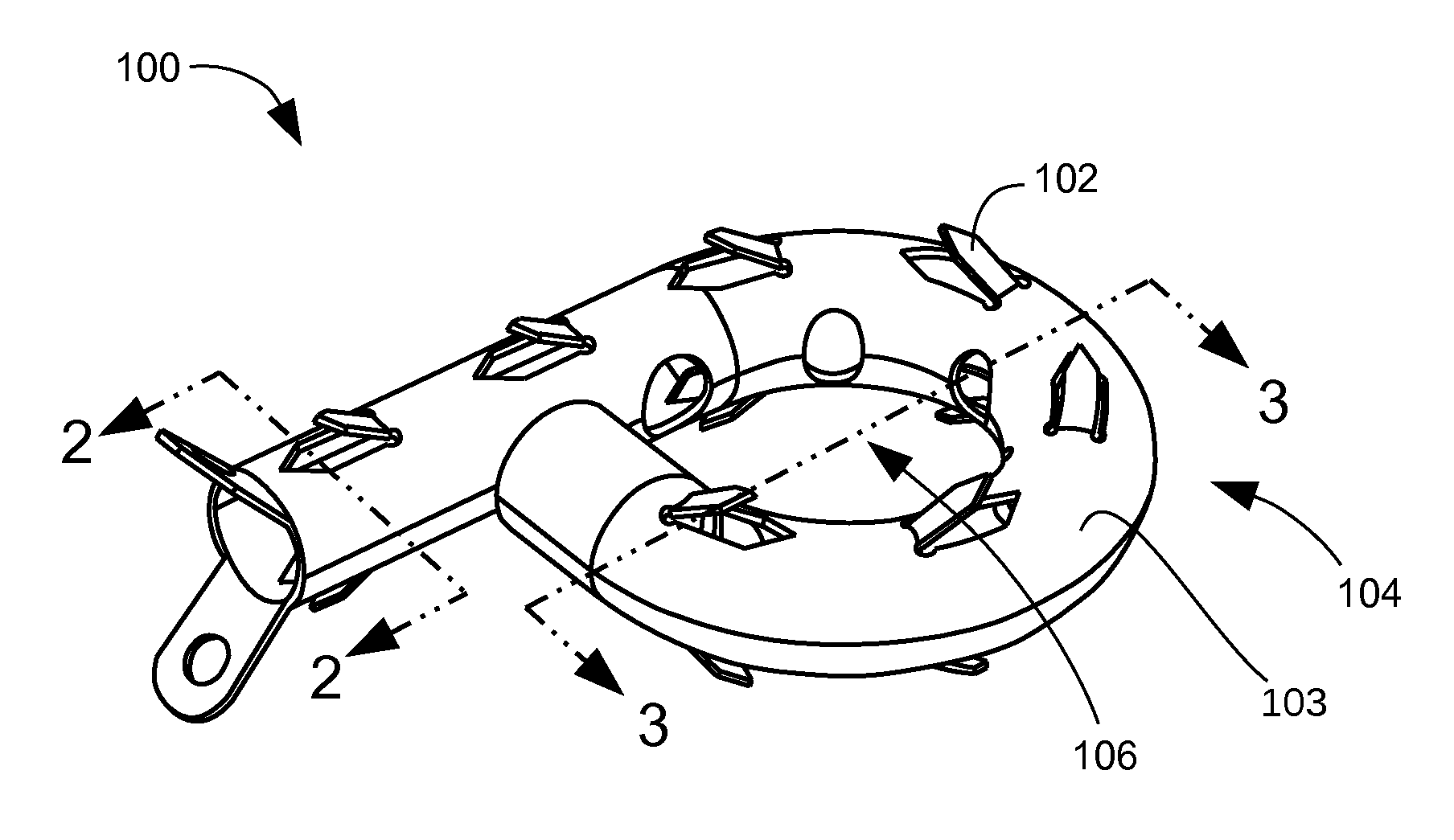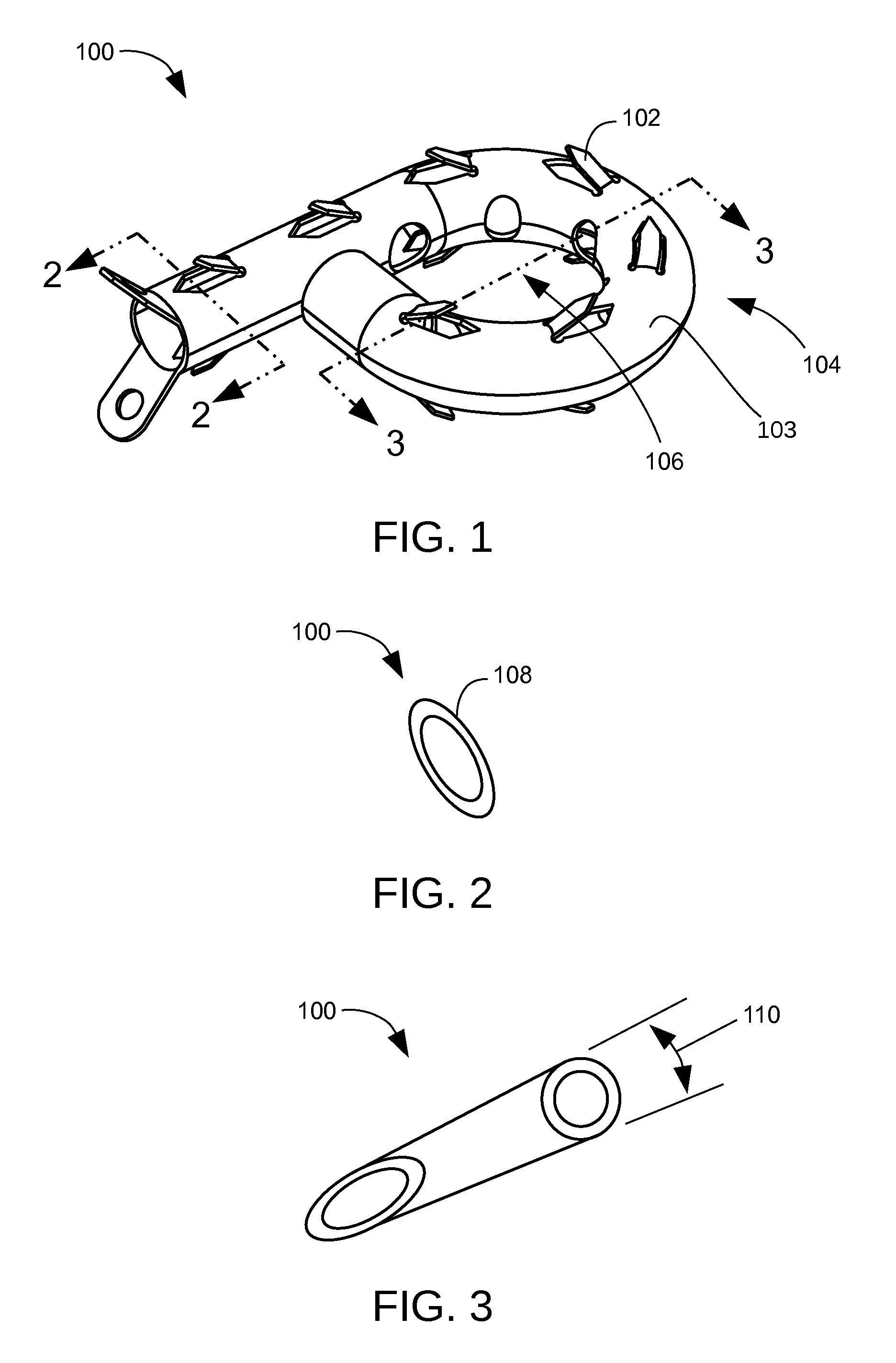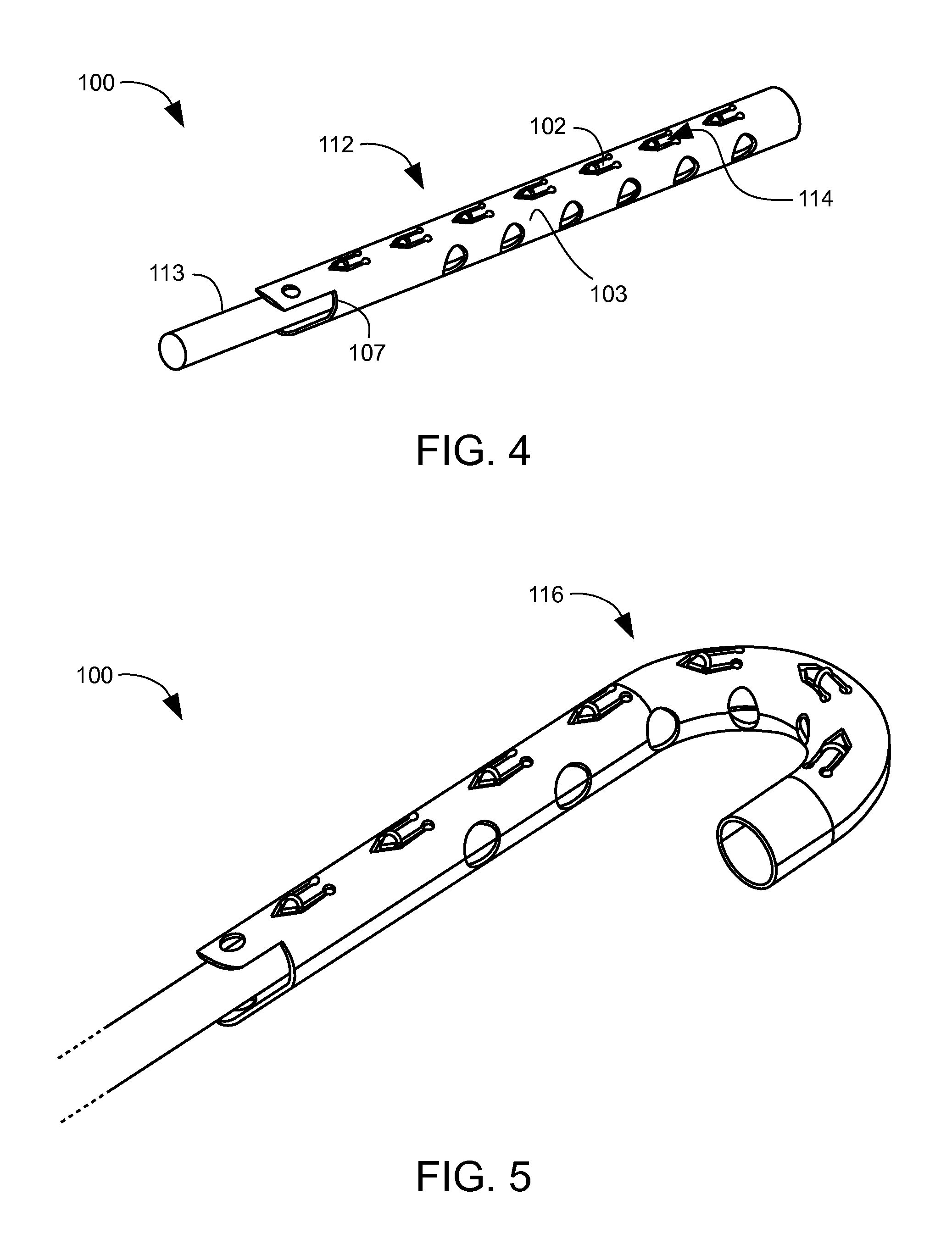Memory material implant system and methods of use
a memory material and implant system technology, applied in the field of orthopedics, can solve the problems of traumatic implantation of internal fixation or fusion devices, adverse impact on healing process, revision surgery or on-going pain experienced by patients, etc., and achieve the effect of reducing the possibility of implant migration and adding structural rigidity
- Summary
- Abstract
- Description
- Claims
- Application Information
AI Technical Summary
Benefits of technology
Problems solved by technology
Method used
Image
Examples
second embodiment
[0048]According to one embodiment of the invention, a nitinol implant system 1700 is treated thermally and mechanically such that it has one predetermined memory set shape. The implant system can be provided with one-way shape memory such that it can undergo deformation at a relatively cool temperature and then recover its preset memory shape upon heating above its austenite finish transformation temperature without requiring external mechanical forces. In a second embodiment, the implant system can be provided with two-way shape memory where the device has a shape that is reversible upon return of the temperature.
third embodiment
[0049]In a third embodiment, the implant system 400 / 2000 may rely on the materials super-elastic properties. For embodiments incorporating the use of super-elastic properties, the implant system is deformed and constrained in the deformed shape using a rigid mandrel. The rigid mandrel may be comprised of a rod or tube. The preferred embodiment would be comprised with the rigid mandrel tube being sized to fit within the inner diameter of the implant system. The inner diameter of the rigid mandrel tube being sized to fit over a guide wire.
[0050]According to one embodiment of the invention, the implant system 1700 can have a memory shape to which it returns when, for example, its temperature is increased to about an average body temperature after having been cooled below its austenite start temperature. The implant system for example, can be designed so that when cooled below about 5° C. it is in its martensitic state and when warmed above about 30° C. it returns to its austenitic stat...
first embodiment
[0055]Referring now to FIG. 1, therein is shown an isometric view of an implant system 100 in the present invention and in an original shape 104. In this embodiment, the implant has barbs 102 that extend radially outward from a main body 103 of the implant system 100. The main body 103 of the implant systems 100 for spine fusion will typically take on a general “p” shape configuration when in the original shape 104. The center 106 of the “p” configuration can act as a receptacle for bone graft or other osteogenic material. This receptacle region provides the benefit of containing or limiting the migration of the osteogenic material.
[0056]Referring now to FIG. 2, therein is shown a cross-sectional view of the implant system 100 of FIG. 1 along the line 2-2. This cross-section shows how the original shape 104 of FIG. 1 of the implant system 100 has been set such that it forms an ellipse 108 with the major axis in the horizontal plane and the minor axis in the vertical plane.
[0057]Refe...
PUM
| Property | Measurement | Unit |
|---|---|---|
| temperature | aaaaa | aaaaa |
| temperature | aaaaa | aaaaa |
| body temperature | aaaaa | aaaaa |
Abstract
Description
Claims
Application Information
 Login to View More
Login to View More - R&D
- Intellectual Property
- Life Sciences
- Materials
- Tech Scout
- Unparalleled Data Quality
- Higher Quality Content
- 60% Fewer Hallucinations
Browse by: Latest US Patents, China's latest patents, Technical Efficacy Thesaurus, Application Domain, Technology Topic, Popular Technical Reports.
© 2025 PatSnap. All rights reserved.Legal|Privacy policy|Modern Slavery Act Transparency Statement|Sitemap|About US| Contact US: help@patsnap.com



